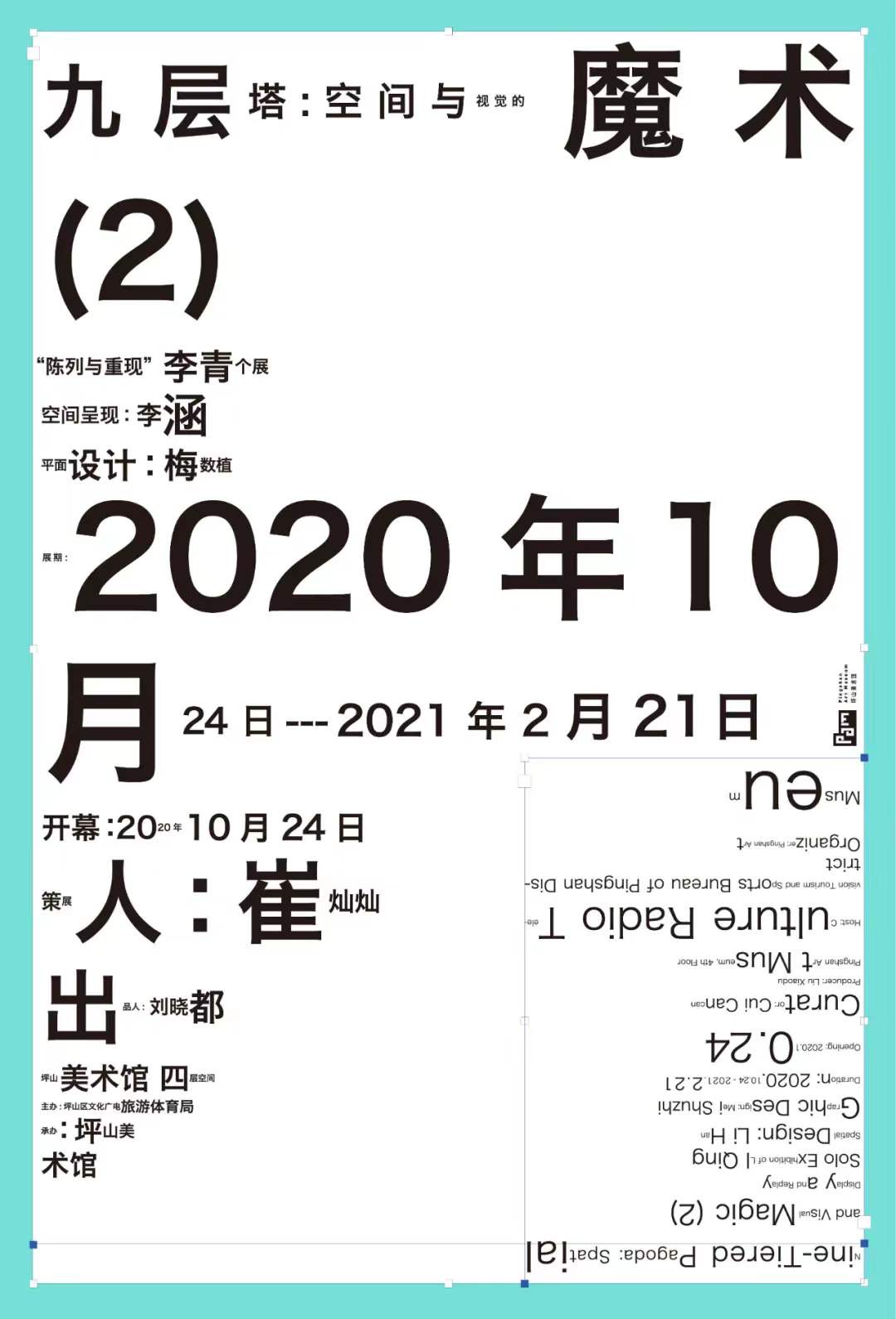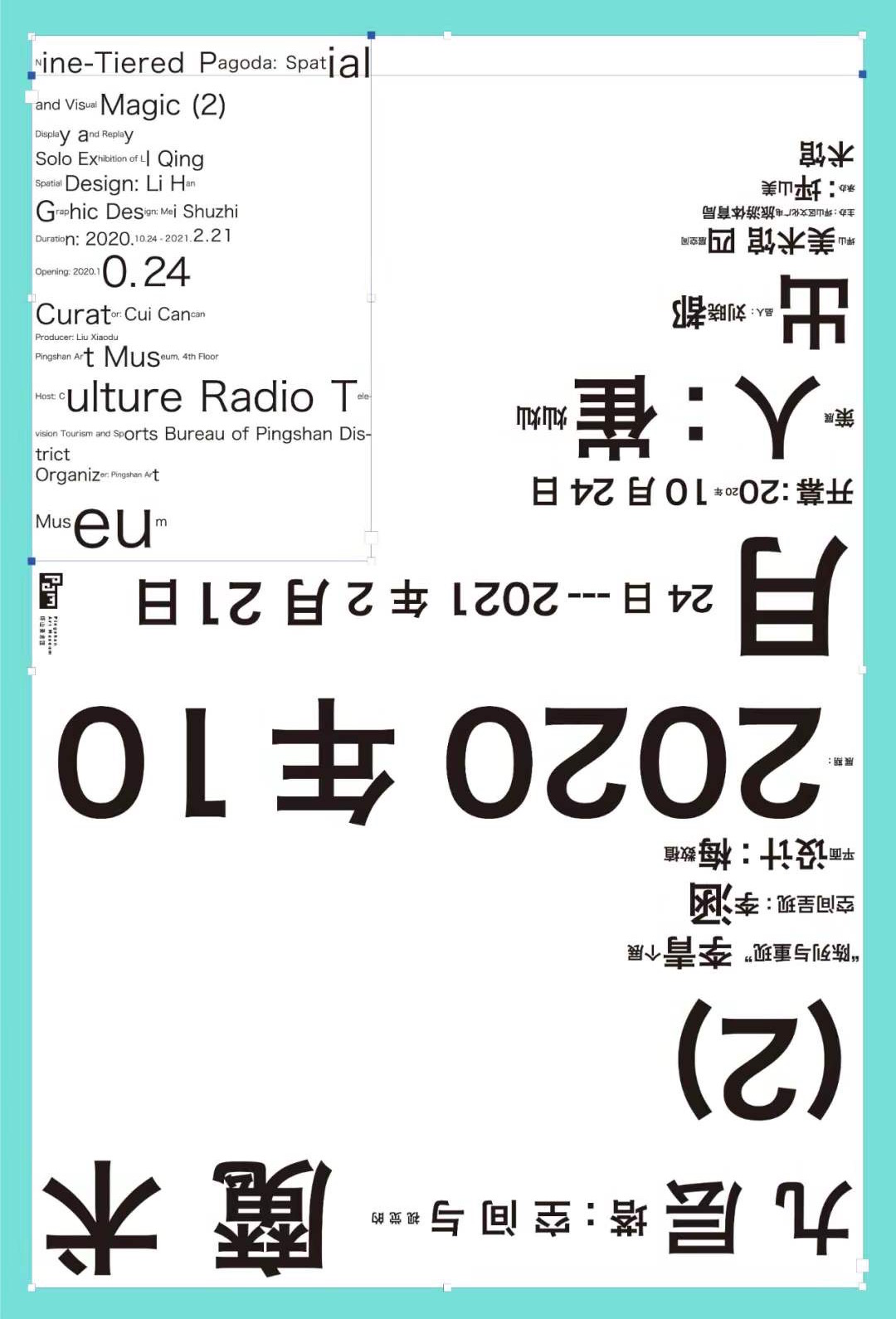Display and Replay – Solo Exhibition of Li Qing
As the second project of Nine-Tiered Pagoda, Display and Replay indicates the joint work of art, architecture and design, which is also the core of the entire exhibition. How do we display content and vision? How do we reproduce thoughts and perceptions? The exhibition is based on the works of Li Qing, with architect Li Han creating the space and graphic designer Mei Shuzhi in charge of posters and other visual designs.
In 2019, Li Qing held an exhibition at Shanghai Rong Zhai, where his work Window had a distinctive dialogue with the old residence, bringing the reenacted story back to the previous glory. While his display in Hangzhou House has fed the decadent sound of colonialism and fragmented memories of warmth to the reality, generating an absurd and contradictory mix. It’s hard to tell whether it’s true of parodic, real or replicated. Three years ago, in Hong Kong, Li Qing’s Neon Light Characters formulates a fictional interaction with the Central, Gloucester Luk Kwok, Oriental Taipan and Kowloon across the street outside his window frames. Windows are important metrics for the quality of house in Hong Kong movies. The best house should not only have windows, but the one where we can also see the distance, or even the sea through the window. ‘Windows’ are displayed in different times, with various states and fates. Some are carrying stories, some renewing hope and some just separating the distance.
Li Qing was chosen because of the relationship among his work, architecture and design. Windows are naturally part of a building. They themselves are also a kind of scenery. They are seen, experienced and observed because of “art”. They resemble the mode of this exhibition, with the‘space’replaying and displaying the work, while‘design’summarizing and reconstructing the content. The story is always told by another story, and the description is always “witnessed” by another description.
All windows have a class, just as all designs imply a stance. Similar with Li Qing, architect Li Han shares his concern for old and new buildings, urban and rural changes, and for different social groups. Li Han interprets the exhibition site as a building about to be demolished. In this man-made ruin, the old and the new, all the buildings and archaeological sites record the fading history. Colorful tiles are decorating a dazzling dream. All are mixed. We can’t tell if we see the city in the window, or if we see each other in this city.
Stories can have a myriad of versions. But no matter for artists, architects or designers, there is a commonality beneath the differences, or a complicity in the focus of work: How do we display and replay the stories and how do we view all connections and turns therein? We all have a deep understanding of what “rhetoric” means.
EVENT DETAILS
Theme:
Display and ReplayDate:
October 24, 2020 to February 21, 2021Exhibition:
Nine-Tiered Pagoda: Spatial and Visual Magic ② Display and Replay: Solo Exhibition of Li Qing
Artist:
Spatial Design:
Graphic Design:
Curator:
Cui Cancan
Producer:
Liu Xiaodu
Venue:
Pingshan Art Museum, 4th Floor
Huide Road, Pingshan District, Shenzhen, China
中国深圳市 坪山区 坪山街道 汇德路
Opening from Tuesday to Sunday
逢周二至周日开放
9:00 – 17:00
Host:
Culture, Radio, Television, Tourism and Sports Bureau of Pingshan District
Exhibition
-
2020/10/24 - 2021/02/21

-
Shenzhen

-
Pingshan Art Museum










